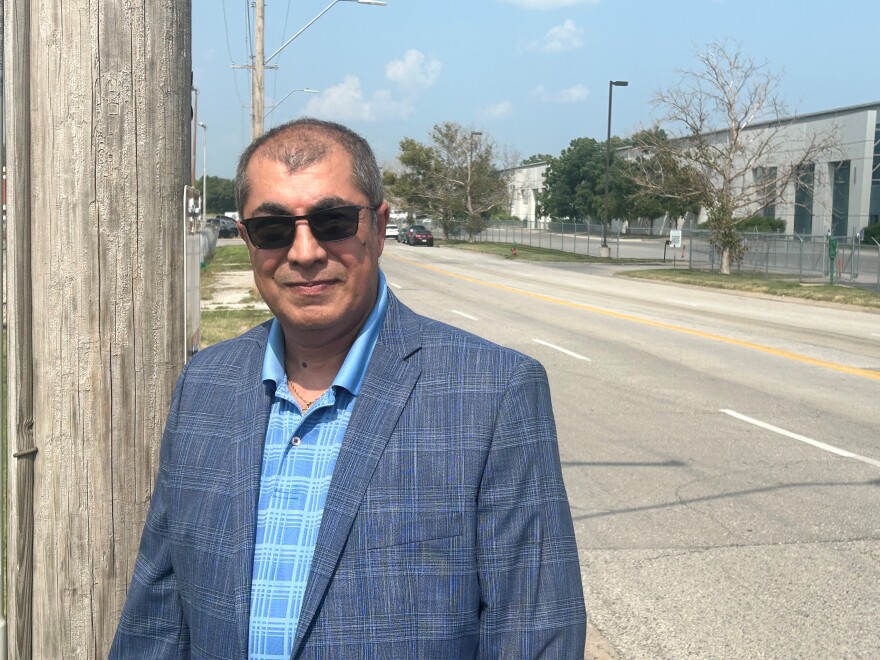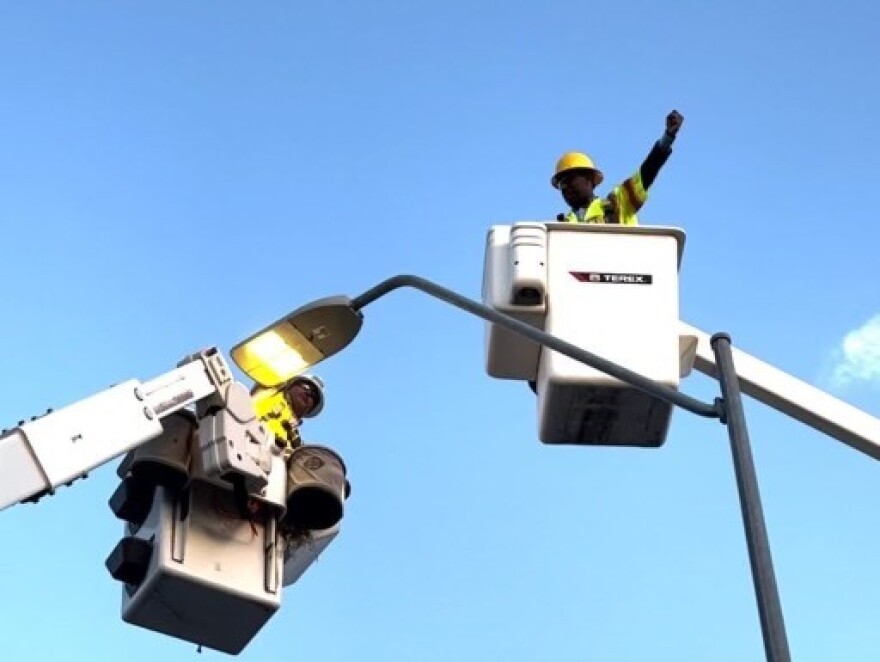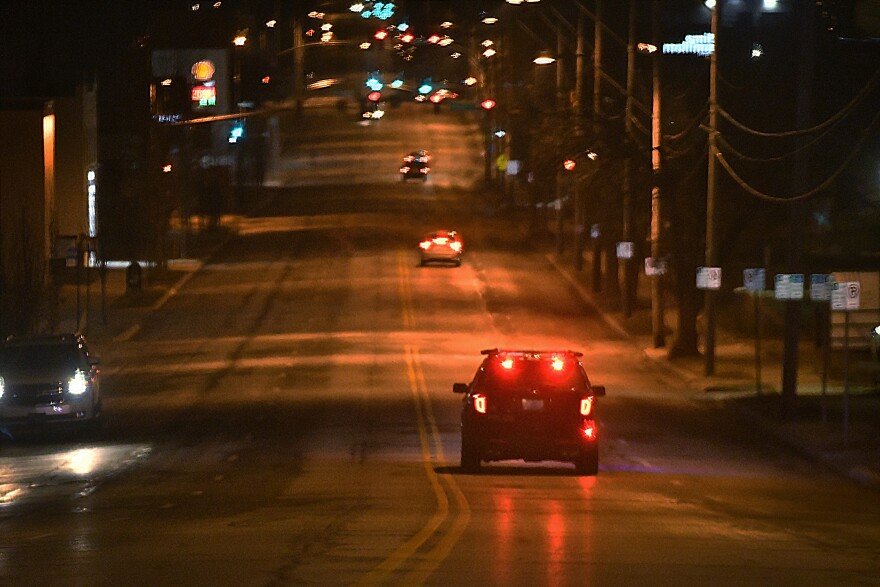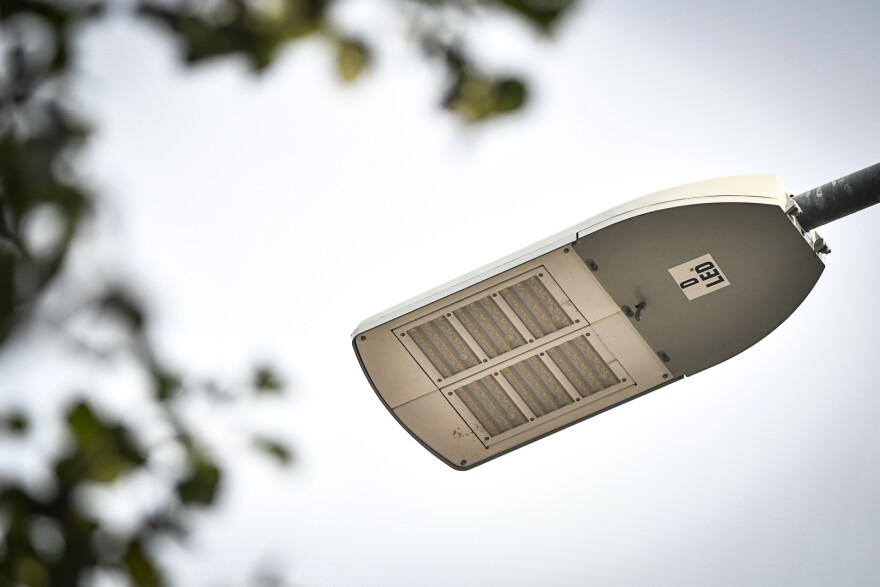Mahmoud Hadjian has spent three decades working with Kansas City’s Public Works Department, most recently as the manager of the city’s street light program. In that role, he recently helped oversee the city’s transition to Light Emitting Diode or LED street lights.
“We started a gateway project with the Department of Energy at that time to do some proof of concept for lighting measurements and things like that,” Hadjian said.
For years, the bulbs used in Kansas City’s streetlights were high-pressure sodium bulbs (HPS) that emitted more multi-directional, orange glow. As cities across the country look toward green infrastructure, Kansas City launched the transition to LED’s in 2012. The bulbs save costs in maintenance, use less electricity and reduce carbon emissions-steps toward a greener environment.
But environmentalists say there are deeper energy issues.

Mahmoud Hadjian, manager of Kansas City’s street light program, has been part of discussions about LED streetlights for more than a decade.
Kansas City’s plan
In 2017, the city invested $2 million to convert 6,000 street lights into LEDs, saving around $300,000 and 1,900 tons in carbon emissions.
“We did a lot of homework between 2012 to 2022 when we started this project,” Hadjian said.
Today, the city has invested $25 million dollars and converted almost 100,000 of Kansas City’s streetlights to LED bulbs. “So we went at the bleeding edge of this technology.”
It’s a worthwhile use of city funds, according to City Manager Brian Platt.
“We are anticipating a $5 million savings from reduced energy and maintenance costs because of the longer useful life of these lights and also the much less energy usage that we see from them,” he said. “And we’re saving approximately 29,000 tons of carbon every year. That’s about 6,000 cars off the road.”
LEDs use less energy to put out the same, or in some cases, more light.
There are several reasons for this. They create light by using an electrical current rather than electrically heating an element like the HPS bulb. They convert just 10-20% of their energy into heat, while the older bulbs convert up to 90% of their energy into heat rather than light.
The LED light is more directional, focused toward a subject, while HPS bulbs send light in all directions. They save energy by emitting little infrared radiation and last as much as 10 times longer than other kinds of bulbs.
All this power-saving means Kansas City energy provider Evergy is pulling less power from its coal-fired Hawthorne Power Plant in Northeast Kansas City. Less coal burned means fewer carbon emissions.
Eric Vogal is Vice President of Black and McDonald, the firm that contracted with the city to install the LED streetlights.
“So, what they’re looking at is for every ton of coal burned, or every gallon of gas burned, how much carbon is created,” he said. “By using less electricity to power our streetlights, we are actually reducing the amount of carbon monoxide carbon emissions that are coming from your power plants.”

Black & McDonald
/
Black &McDonald
Black and McDonald electricians install LED light near 18th and Vine.
Missouri and coal
Missouri is one of the largest users of coal-powered electricity in the nation, fueling 59% of the state’s electricity in 2023. The U.S. Energy Information Administration reports that the use of coal has gone down in Missouri since 2017, but it still serves as the primary energy source for electric power in Missouri.
“In 2023, about 24 million tons of coal were burned for electricity generation in Missouri, the second-most in any state, only behind Texas,” the agency reports.
This dependence on fossil fuels is one reason activists suggest the LED lights are a band aid on a much bigger problem.
Sunrise Movement Kansas City has long been advocating for a switch to renewable energy as part of a broader clean energy policy. The target of their activism-the Hawthorne coal-fired power plant.
The plant’s location in the historic northeast section of Kansas City is in one of the metro’s prominently black and brown working-class communities.
According to the Robert Woods Johnson Foundation, life expectancy in the communities closest to the plant, which represent ZIP codes 64123 and 64125, was roughly 76 years in 2020, below the national average.

Carlos Moreno
/
KCUR 89.3
A police cruiser and other traffic drive in and out of the shadows created by the old street lights along 63rd Street.
Raymond Forstater, one of the leaders of Sunrise Movement KC, said there are a number of factors that lower the health outcomes in under-resourced communities, including limited access to healthy food, health care and housing.
But breathing in pollutants from the Hawthorne coal-fired power plant, he says, is certainly another one. The Sunrise Movement had been lobbying to shut down the plant for decades.
Forstater says changing out the streetlights doesn’t make significant strides toward carbon neutrality as long as the city’s infrastructure is powered by coal.
“You know, LEDs, streetlights, while they’re great, it’s more of a bureaucratic, climate solution,” he said.
Forstater argues that as long as Evergy, the city’s main energy provider, is a member of the city’s carbon reduction plan, progress will be limited.
“We saw that the people that are on the Mayor’s Climate Protection Steering Committee were fighting to have the city oppose the coal plant, to have the city call for it to be closed within the next few years, “he said. “And the Evergy representative on that board pushed back on that hard.”
In a statement to KCUR, Evergy said Hawthorn has state-of-the-art technology aimed at reducing emissions.
“Evergy’s Hawthorn power plant is a vital part of our region’s electrical grid. Hawthorn provides the electricity necessary to power our region on hot and cold days when the wind is not blowing, or the sun is not shining. It also provides the electrical support necessary for Evergy to provide our customers with thousands of megawatts of renewable energy.
“Currently, half of the power generated by Evergy comes from emission-free resources — better than many utilities across the United States… As a utility providing an essential service to the region, Evergy cannot focus only on sustainability as some advocacy organizations do. We must continue to make sure that the electrical system serving the Kansas City region is reliable and affordable.”

Kansas City’s streetlights are now predominantly LED lights, which save the city energy and maintenance costs. But critics say the city has bigger environmental problems.
A model of success
Boston is a city that has been successful in moving toward greener infrastructure. The city reduced emissions by 30% over the last 20 years by focusing on transit, clean energy and sustainable construction.
In 2007, Boston set a goal to cut its carbon emissions 25% by 2020. The city achieved this goal five years ahead of schedule.
By 2017, Massachusetts had permanently closed its last coal plants, transitioning to natural gas and renewable energy sources.
Forstater believes Kansas City could make similar progress toward sustainability, but not until people hold their political leaders accountable.
The Republican Missouri legislature has proven to be less than willing to embrace environmentally progressive policies.
Missouri House Bill 734, signed by Gov. Mike Parson in 2021, essentially ties the hands of cities or municipalities in their efforts to require renewable energy in new or renovated construction. The law says there can be no restrictions on utilities — regardless of the type of energy they provide.
Forstater says since the bill passed, officials have failed to make progress on many goals in the Kansas City Climate Protection and Resiliency Plan.
“Our conservative Legislature is more about backing fossil fuel corporations than energy independence,” Forstater said.
Source link : http://www.bing.com/news/apiclick.aspx?ref=FexRss&aid=&tid=66d0a8ce849f4910bb8aa7ba437b99e0&url=https%3A%2F%2Fwww.kcur.org%2Fnews%2F2024-08-29%2Fkansas-city-saved-energy-by-switching-to-led-streetlights-but-it-has-bigger-climate-issues&c=12134654641155062556&mkt=en-us
Author :
Publish date : 2024-08-29 02:59:00
Copyright for syndicated content belongs to the linked Source.
